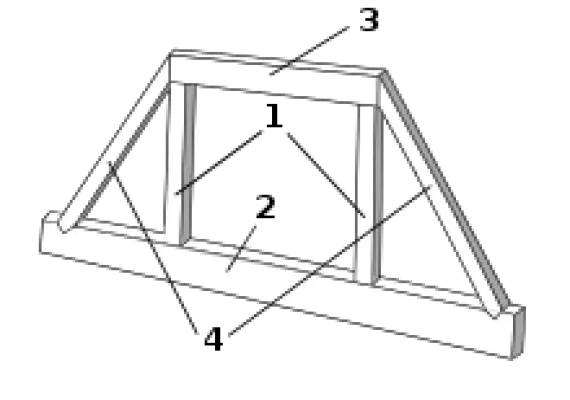What Is A Steel Portal Frame Building?
What Is A Steel Portal Frame Building?
A steel portal frame building is a type of low-rise structure consisting of columns and horizontal or pitched rafters connected by moment-resisting connections. The primary steelwork consists of columns and rafters, which form the portal frames, and longitudinal bracing.
Steel sections used in portal frame structures are usually specified in grade S355 steel. Secondary steel elements such as side rails for supporting the external wall cladding and purlins for the roof may also be included.
Portal frames are often used to reduce the rafter size and horizontal shear at the end frame (gable) when a large span is required. Stability design criteria for metal structures can be found in engineering structures journals such as Guide to Stability Design Criteria for Metal Structures.
A steel portal frame building is a type of construction commonly used for industrial, commercial, and agricultural purposes. It is a building structure made up of steel columns and steel rafters that are connected together with high-strength bolts to form a rigid frame.
The steel portal frame building design features large open spaces that are ideal for factories, warehouses, workshops, and storage facilities. These buildings can be customized to suit specific requirements and can range in size from small workshops to large industrial facilities.
The steel portal frame building offers several advantages over traditional construction methods, including faster construction times, improved durability, and increased flexibility in design. Additionally, the use of steel as the primary building material makes these structures more resistant to weather, fire, and pests.
What Is The Purpose Of A Portal Frame?
The main purpose of a portal frame is to reduce the bending moment in the beam, allowing the frame to act as one structural unit. This form of design is used to create wide-span enclosures such as warehouses, agricultural buildings, and industrial units.
Portal frames are typically fabricated from steel, reinforced precast concrete, or laminated timber (glulam). They are characterized by a beam or rafter supported at either end by columns and connected by moment-resisting connections.
Other forms of portal frames include tied portal frames, propped portal frames, and double-pitched frames with a rigid joint at the apex.
Portal frames can also be used for low-rise buildings with several floors where they can be economical if the floors do not span right across the building. Additionally, they are often used to determine experimental values for deflections and reactions using Frame2D excel methods.
What Are The Different Types Of Portal Frames?
There are several different types of portal frames, including pitched roof symmetrical portal frames, crane portal frames with column brackets, mono-pitch portal frames, propped portal frames, mansard portal frames, curved rafter portal frames, and cellular beam portal frames.
These types of structures can be constructed using a variety of materials and methods such as steel, reinforced concrete, and laminated timber.
Portal frame structures are composed of columns and rafters which form the main (portal) frame and bracing. The end frame is usually made from UB sections with a substantial eaves haunch section.
Portal frames can be used for single-story buildings or low-rise buildings with several floors. They can also be clad with various materials such as lightweight insulated metal cladding or cavity masonry work.
The uses of portal frames include providing support for roofs and walls in buildings, providing structural stability to the building, and allowing for large spans between supports.
The advantages of using these types of structures include their cost-effectiveness, speed of construction, and flexibility in design.
What Are The Advantages Of Steel Portal Frame Buildings?
The advantages of steel portal frame buildings include quick and easy construction, cost-effectiveness, and versatility for multiple purposes, low maintenance, and aesthetically pleasing designs.
Steel frames are also durable, allowing for lower repair and replacement costs. Additionally, steel frames can be easily adapted to sudden design changes and future-proofed for structural additions or modifications such as renovations or expanding the size of an existing building.
Steel frames also reduce the need for load-bearing timber posts, maximizing floor space in an age of skyrocketing property prices.
However, there are some disadvantages to steel frame construction, such as buckling if care is not taken in the design phase and the inability to adjust components on-site like with wooden structures.

